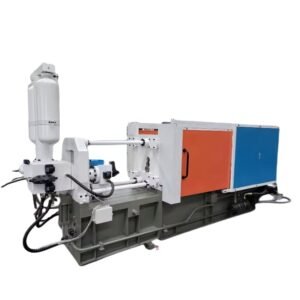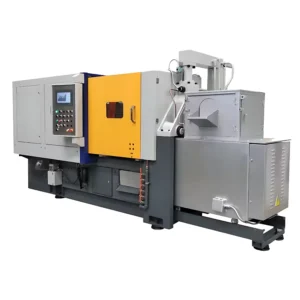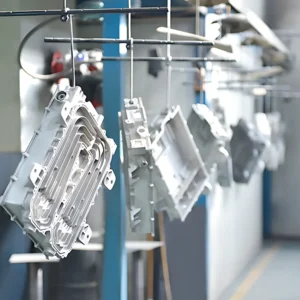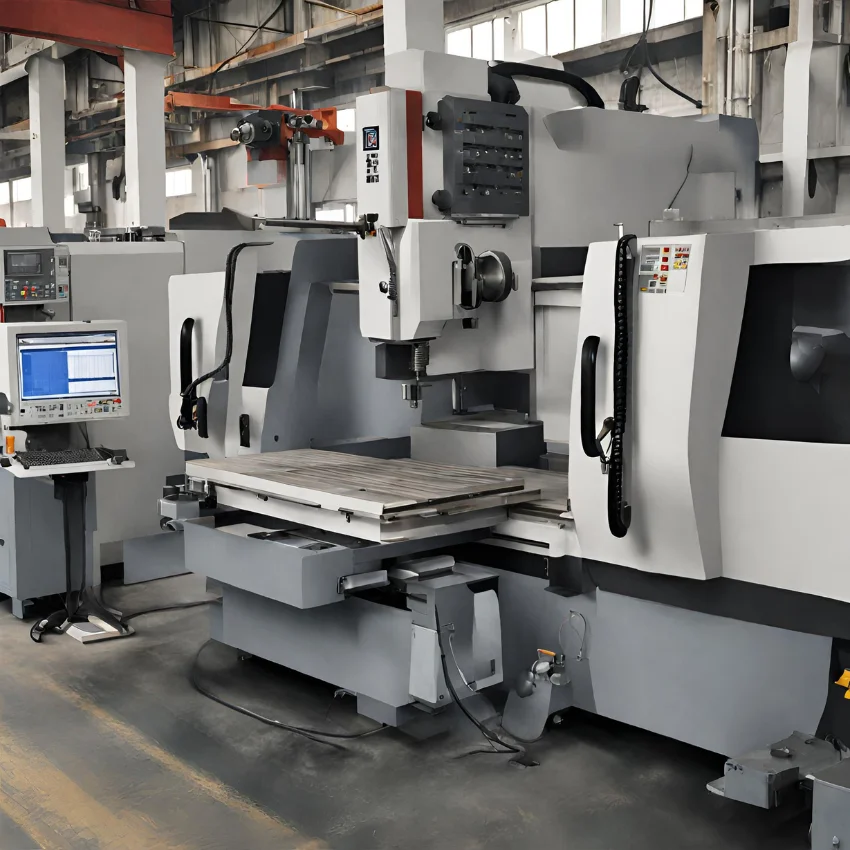In industry, computer numerical control (CNC) is a machining process that autonomously manipulates, moves, and manufactures precision parts. It is usually controlled using computer software built into the machine tool.
In industry, CNC machines are commonly used to cut metal and plastic products. Mills, lathes, cutters, drills, grinders, water jets, and lasers are the most commonly used cutting machines. All of these tools can be programmed to work with a CNC. CNCs can also be used to manage non-mechanical tools, such as machines used to weld and assemble electronic equipment.
History of Computer Numerical Control
Over the past few decades, CNC technology has evolved from controlling machines by punching tapes to controlling machines by reading CNC codes. On the other hand, CNC machines have evolved from producing standard parts to producing high-precision three-dimensional mechanical parts.
John Parsons developed the concept of CNC machine tools. He created the first CNC machine in 1949. The function of this machine was to feed instructions into a set of punched cards. Later, in 1952, a team of professionals at the Massachusetts Institute of Technology (MIT) created the Cincinnati Milacron Hydrotel, which was the first CNC machine for the public.
How Computer Numerical Control Works
In a CNC system, the machine control unit (MCU) is a microcomputer that communicates with the machine. This microcomputer saves and executes a unique computer program for each item to be machined. These applications are usually developed using the international standard language G-code, M-code is a programming language that can also be used with G-code to perform CNC tasks.
G code tells the machine how to move and work, while M code instructs the program how to move externally. These programs also include machine instructions and other settings. For example, the material feed rate, the position and speed at which the workpiece is to be moved, and so on.
Engineers first use computer-aided design (CAD) to draw a diagram of the part to be manufactured. The drawing is then converted to G-code. The program is installed onto the microcontroller and then run for a trial run without raw material. This step is critical to check and ensure that everything is configured and functioning properly. This is because incorrectly adjusting the speed or position can cause damage to the machine and parts.
Once everything is ready, the CNC machine will run programs and complete tasks as needed. These programs can be created, printed, or cut from scratch.
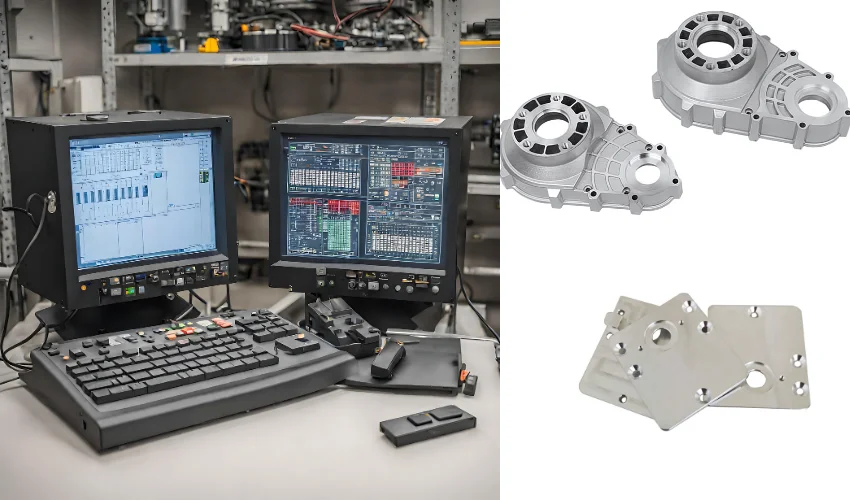
Why Are CNC Machines Important?
CNC machines enable a variety of machine tools to produce smoother, more accurate products faster. This method eliminates the need for manual machining or high labor inputs. In other words, the CNC machining process greatly saves companies time and labor costs.
Here are some of the advantages of CNC technology:
Cost Reduction
The CNC machining process allows for the production of more accurate parts, thus reducing production costs. Therefore, CNC machining is a more cost-effective process. Reduced material waste, increased productivity, and the ability to scale up all lead to reduced material consumption, which reduces operating costs. There is also no need to worry about financial liabilities associated with worker safety, which also helps to reduce costs.
Reduction of Material Waste
CNC machining advancements in simulation and iterative optimization have significantly reduced material waste. With improved accuracy, speed, and repeatability, CNC machines minimize human errors, enhancing overall manufacturing precision and efficiency. This translates to lower machining costs and fewer errors in product fabrication.
Improved Worker Safety
By eliminating the need for much human-machine interaction, CNC computers can improve worker safety and prevent accidents. Most CNC machines can now operate independently. Users can control them remotely for software upgrades, design modifications, and other normal maintenance.
Efficient and Intelligent
CNC machining offers numerous benefits, including contour-cutting capabilities, faster creation of MCU code with built-in CAD and CAM software, and improved operational intelligence through ERP integration. In addition, CNC machines reduce production bottlenecks through automated processes, increasing overall efficiency.
We, China Casting Synergy Group, specialize in the manufacturing of casting products (aluminum, zinc, magnesium, copper, and metal materials) and CNC machining (CNC turning and CNC milling) products. If you need any manufacturing products machined, you can click here to learn more about us.
Application Areas of CNC Machine Tools
CNC machine tools play an important role in many fields such as health, aerospace, military, and defense. Companies in these industries need the most accurate parts, as broken parts can be fatal. The CNC machining process is capable of delivering highly accurate parts in large quantities.
Let’s take a look at the industries that often use CNC machining.
Related Reading: Applications of CNC machine
Aerospace
CNC technology makes it easier to achieve the precision needed to manufacture every part of an airplane. This includes the exterior shell and interior components. CNC machining of aircraft components requires the highest possible level of precision and accuracy because these components are often project-critical.
In addition, computer-aided machining is often the only way to meet high standards for flatness, roundness, and cylindricity. Tolerances as small as 0.00004 inches are also common.
Aerospace CNC machining can use a wide range of materials. These include high-performance metals such as aluminum, stainless steel, brass, nickel, bronze, ceramics, polymers, magnesium, titanium, and Inconel alloys.
Below are some examples of parts manufactured using CNC machines:
- Landing gear components
- Titanium shrouds
- Wind wings
- Shaft bushings
- Stator assembly
- Manifolds
- Magnesium gearbox housing
- Electrical connectors
Medical Equipment
To meet the needs of patients, the medical industry relies heavily on CNC machine tools to produce precision, quality, and customized products. The demand for masks and respirators has increased the use of CNC machines because of the need for medical standards.
People receiving medical care often use disposable medical devices to avoid contracting infectious diseases. Therefore, it has become more important for the medical industry to use CNC machines to produce more medical supplies quickly.
Here are some common items that can be manufactured using CNC machines:
- Magnetic resonance imaging machines
- Implants
- Ear, nose, and throat devices
- Electronic housings for monitoring equipment
- Research equipment
- Shielding housings
- High-temperature plastic parts
- Medical devices
- Customized sterile packaging
- FDA-approved items
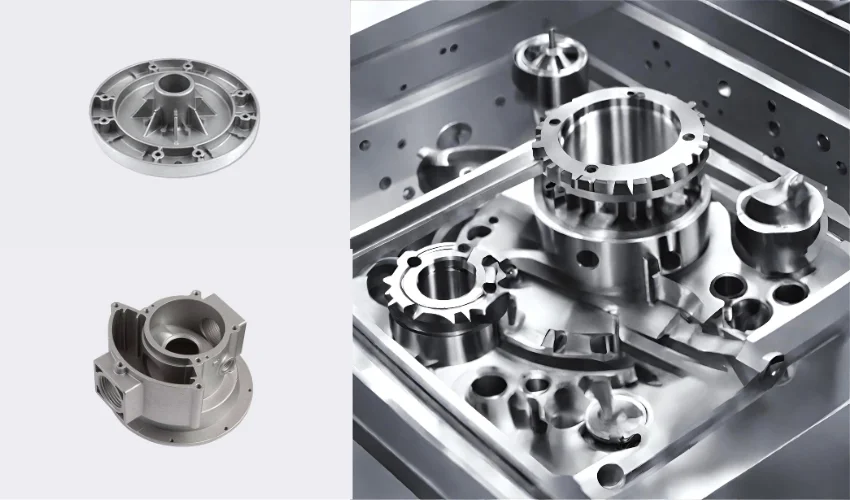
Automotive Industry
The automotive industry relies heavily on CNC machining. From developing prototypes to producing large quantities of parts, every aspect of the automotive industry benefits from CNC machining.
In addition, CNC mills and lathes are used to manufacture a wide variety of parts. From large engine blocks to small gears and panels, these are all manufactured through CNC machining. In addition, internal combustion engines alone require the use of multiple CNC machines in combination.
These CNC machines can machine large pieces of sheet metal into engine body panels. Additionally, they can manufacture cylinders, pistons, and other parts necessary to connect the cylinder components in an engine block.
The following are some of the parts that can be manufactured using CNC machines:
- Gearboxes
- Engine components
- Axles
- Valves
- Instrument panels
- Cylinders
- Air pressure gauges
Electronics
CNC machining processes are both accurate and flexible, making them an effective method for manufacturing electronics. CNC machines can machine a wide range of polymers and metals, including conductive and non-conductive materials.
Manufacturing computer parts is faster using CNC machining techniques. This is because it does not require a pre-fabricated mold stage. Designs can also be updated and tested over and over again with little guidance. According to people familiar with the matter, Apple has 10,000 CNC machines and uses them to build a large number of laptops.
CNC machines produce a variety of items, including:
- Consumer electronics
- Semiconductors
- Heat sinks
- Printed circuit boards
- Electrical insulation
- Amplifier enclosures
- Radiofrequency interference shielding
Gas and Oil
CNC machines are used to design large machines for drilling rigs and factories to ensure that they fit together precisely. If parts do not fit together properly, cylinders may not inflate, pistons may not release enough pressure, and valves may leak. For this reason, oil companies use CNC machining of parts to ensure that components fit together correctly.
The following are common parts that are machined using CNC machines:
- Drills
- Gears
- Pistons
- Valves
- Hydraulic components
- Valve systems
Marine Industry
The marine industry relies heavily on CNC machine tools. This is because ships require extremely precise components to keep them running smoothly and properly. Ships require a variety of gears, including underwater sensors and actuators. As a result, the marine industry must use CNC machines to manufacture boats and other marine equipment.
Here are some of the common parts that are manufactured using CNC machines:
- Propellers
- Insulated housings
- Engine parts
- Prototype molds
- Ribs
- Stinger
Conclusion
In conclusion, CNC machine tools are technological marvels that have transformed the production and machining of parts. Its ability to utilize computer-controlled machines to efficiently perform complex operations has transformed fields ranging from aerospace to marine.
These machines are guided by computerized programming to achieve levels of precision and consistency unheard of until now. As technology advances, the machining capabilities of CNC machine tools will continue to increase, creating new opportunities for complex and efficient production in a wide range of industries.

